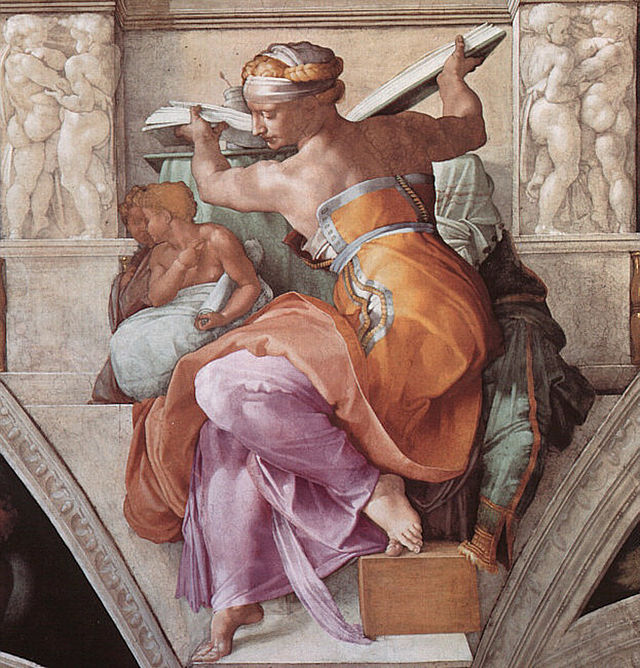
Sibyl were legendary Greek prophetess and embraced into Roman mythology. The Sibylline Books consist of three books acquired by Tarquin the Proud, and believed to contain powerful portents of the future and, therefore, treated as national and sacred treasures of ancient Romans.
The Sibylline Oracles, on the other hand, is a collection of supposed Jewish and Christian 'prophecies' from the middle half of the 2nd Cent. Scholars now believe that they were reports of past events cast in the form of predictions.
The Sibyllian Books - The origin of the Sibylline Books is wrapped in mystery. One story tells of the last king of Rome, Tarquin the Proud, being approached by a haggard old woman one day who offered to sell him nine books for a considerable sum of money. The king just laughed at her. The woman left, burned three of the books, came back to Tarquin and offered now to sell him the remaining six books for the same sum of money as she asked for the nine. The king again laughed at her. She left, burned three more books, and came back to the king. The king was now worried he may be missing out on a deal he may regret. He paid her the sum she asked for, and so came into possession of the books which would eventually become one of Rome's most treasure possessions, kept in the Temple of Jupiter under constant guard. They, supposedly contain secrets, which when properly interpreted, would allow them to glimpse into the future; so potent were they the Roman senate would allow them to be consulted only at times of the greatest of national crises and only by the highest orders of her magistrates. The Temple of Jupiter was stuck by lighting on 6 July 83, and in the ensuing fire the Sibylline Books were destroyed.

The Sibylline Oracles - Written by Jewish and Christians between 150-180 AD, these were thought at one time to be genuine prophecies by pagan prophetesses, especially by early theologians such as Theophilus of Antioch and Clement of Alexandria who thought that such non-Christian prophets were no less than the OT prophets. They were eventually collected into a single manuscript comprised of 14 books (two of which, the 9th and 10th, were missing). Though published only in 1545, but its effect on Christian culture was already apparent, as evidenced by Michelangelo's inclusion of a number of them among the OT prophets in his painting of the Sistine Chapel.

The Libyan Sibyl by Michelangelo on the Sistine Chapel

©ALBERITH
191219lch